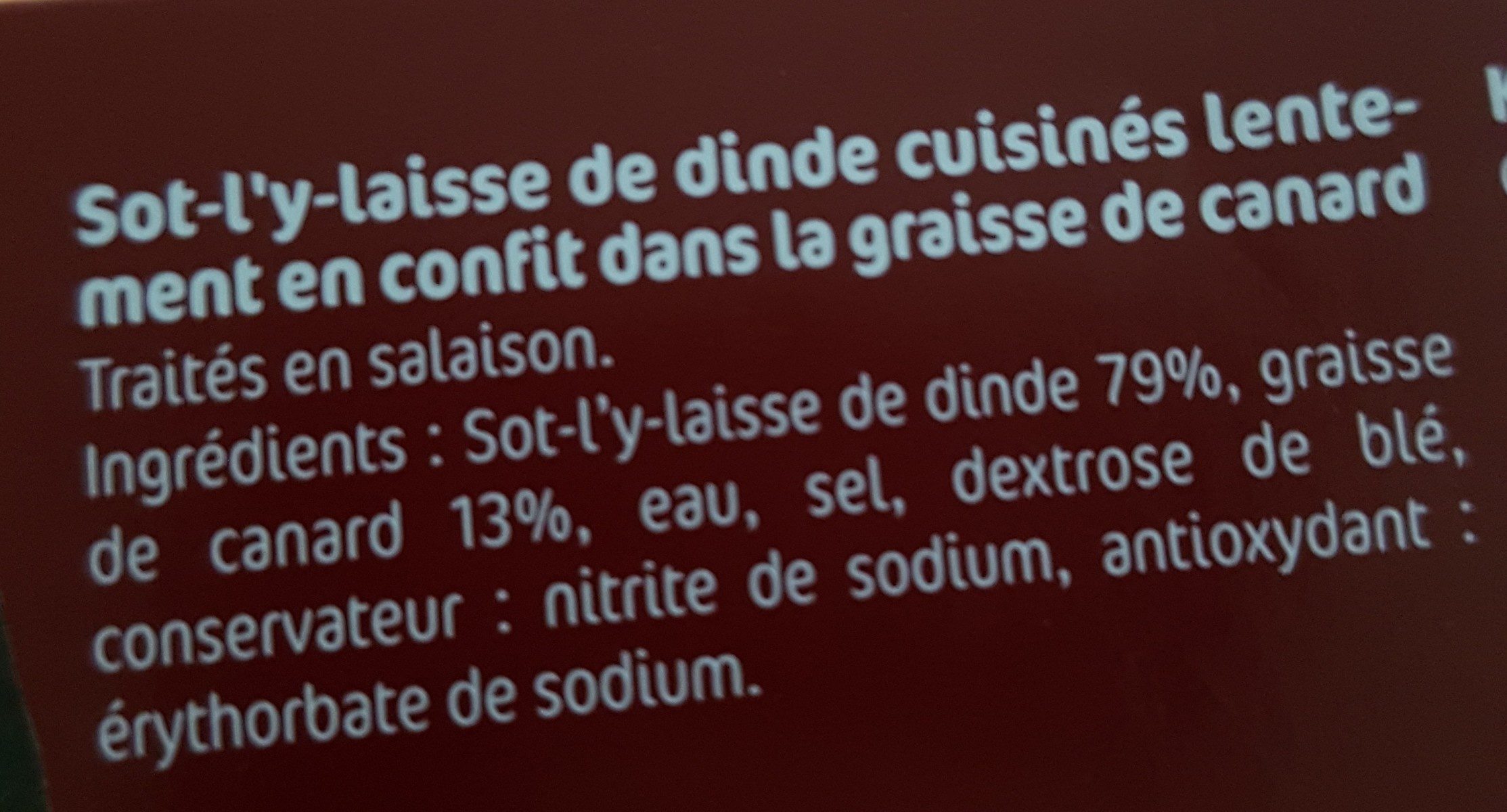Sot-l'y-laisse de Dinde - Le gaulois - 250 g
This product page is not complete. You can help to complete it by editing it and adding more data from the photos we have, or by taking more photos using the app for Android or iPhone/iPad. Thank you!
×
Some of the data for this product has been provided directly by the manufacturer groupe-ldc.
Barcode: 3266980382155 (EAN / EAN-13)
Common name: Sot-l'y-laisse de dinde cuisinés lentement en confit dans la graisse de canard
Quantity: 250 g
Packaging: Plastic, Bag, Box, Cardboard, Fresh
Brands: Le gaulois
Categories: Meats and their products, Meats, Poultries, Turkey and its products, Turkeys, fr:Sot-l'y-laisse de dinde, fr:Volaille confite
Labels, certifications, awards: French meat, French poultry, Nutriscore, Nutriscore Grade C
Origin of ingredients: France
Producer: LDC DPE - Le Clos du bois - 72300 Sablé/Sarthe
Manufacturing or processing places: France
Traceability code: FR 72.264.002 CE - Sablé-sur-Sarthe (Sarthe, France), EMB 72264 - Sablé-sur-Sarthe (Sarthe, France)
Link to the product page on the official site of the producer: http://www.legaulois.fr/gamme/les-confit...
Stores: Leclerc, carrefour.fr
Countries where sold: France
Matching with your preferences
Environment
Carbon footprint
Packaging
Transportation
Report a problem
Data sources
Product added on by asmoth
Last edit of product page on by kiliweb.
Product page also edited by additives-app-chakib, dorado-jerome, driveoff, ldc, openfoodfacts-contributors, org-groupe-ldc, packbot, roboto-app, yuka.UWZ3cUs1Z0xuLzBGeGNZd29TbjJ5TlFrekxtTFUzdTljTHNCSVE9PQ.










